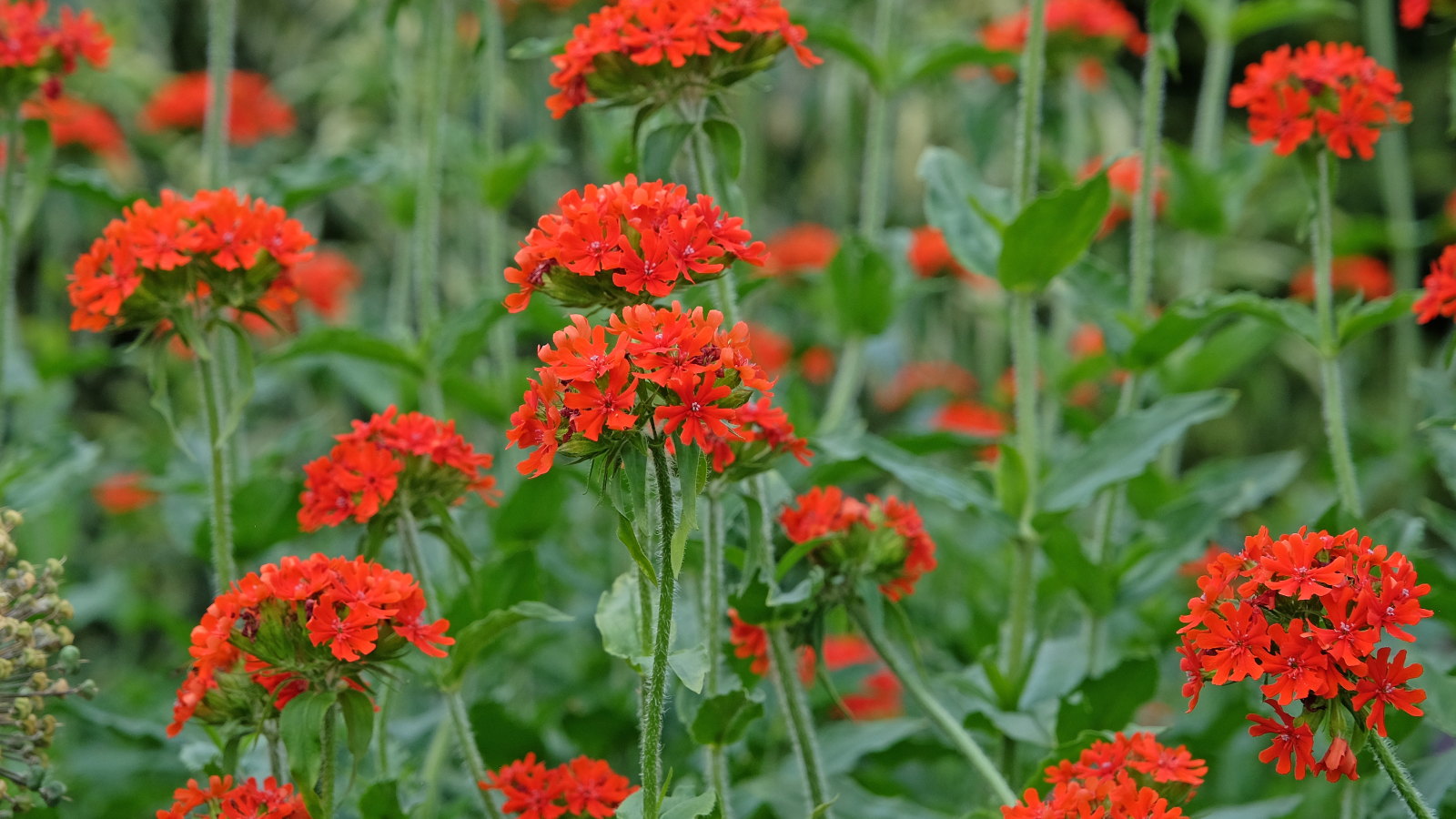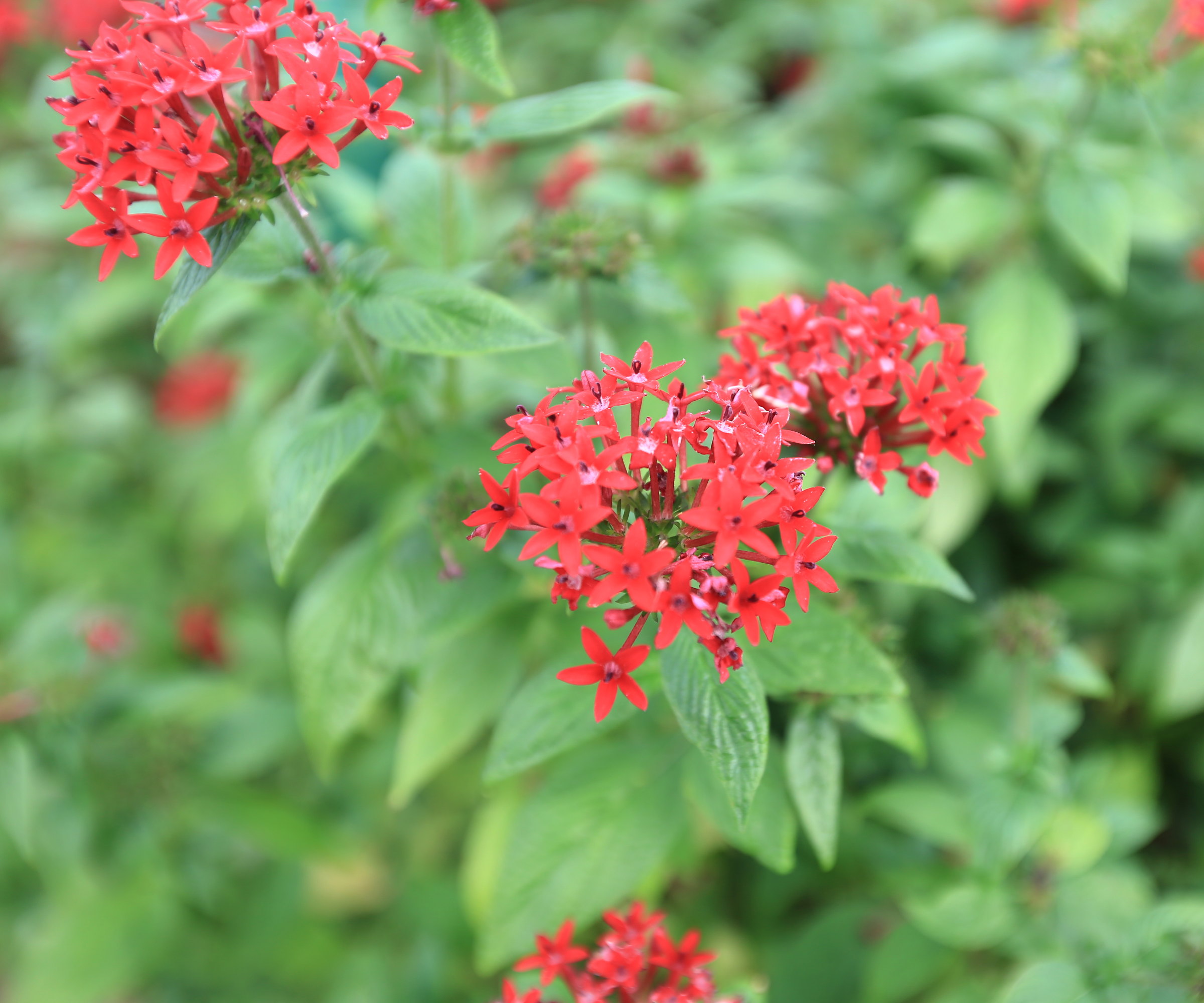
Silene chalcedonica is an eye-catching and standout perennial adored by gardeners and pollinators alike. Add this to your flower beds and it’ll attract a bounty of butterflies, bees, and hummingbirds throughout the summer.
Also commonly known as 'Maltese Cross', it is a dual-purpose and low-maintenance plant that is very versatile. Silene chalcedonica can thrive in many conditions and fit different garden styles, always offering a dazzling pop of scarlet-orange flowers.
If you are looking for one of the best perennials to bring beauty and attract lots of pollinators to your garden, then Silene chalcedonica fits the bill. This guide looks at how to grow Silene chalcedonica, with planting and care tips from a Master Gardener.

All about Silene chalcedonica
Silene chalcedonica is a perennial plant formerly known as Lychnis chalcedonica until 1994. It is also commonly known as the 'Maltese Cross' or 'Jerusalem Cross' due to the shape of the bright flowers that bring pops of color in early to mid-summer.
Silene chalcedonica grows 2 to 4 feet tall and is popular in cottage gardens, mixed flower beds, and wildlife gardens. The vivid blooms look stunning, and Tabar Gifford, plant expert for High Country Gardens, hails Silene chalcedonica’s bright blooms as ‘a beacon for pollinators’.
'Silene chalcedonica is particularly attractive to butterflies, bees, and hummingbirds, offering nectar and vibrant color during peak summer months,' says Tabar.
'It also draws in other beneficial insects, contributing to a healthy and dynamic garden ecosystem.'
The plant is also deer and rabbit resistant, which Tabar adds is 'a real bonus for wildlife-prone gardens' as unwanted visitors will not nibble the stems and lush foliage.
Where to plant Silene chalcedonica

Grow Silene chalcedonica in full sun for the best flowers, but the plant can also tolerate part shade. A spot that provides afternoon shade is particularly beneficial in warmer climates.
'Silene chalcedonica prefers average, well-drained soil and can handle moderate to moist conditions,' says Tabar Gifford. 'While it appreciates regular moisture, it becomes more drought-tolerant once established.'
'Choose a spot with good air circulation and enough space for its mature height (36–48 inches) and spread (about 12 inches),' she adds.
Silene chalcedonica can grow in pots in a container garden on a deck, patio, or balcony. Any container needs holes in the bottom for drainage and to be filled with a rich and well-draining potting soil for container gardening.
Silene chalcedonica care tips

- Support - Silene chalcedonica can grow to four feet tall and benefit from being staked, especially in windy sites. Tall plant supports prevent the plant from being toppled in winds or heavy rain, especially when it is covered in flowers.
- Watering - As mentioned earlier, Silene chalcedonica is a drought-tolerant flowering perennial once established. However, newly-planted clumps need regular watering for the first few months to get established, and, even afterwards, the plants will perform better when watered during dry periods. Mulching the plant in early spring will help the soil to retain moisture and suppress weeds.
- Fertilizing - Silene chalcedonica is not a heavy feeder, but does best in fertile soil. Adding compost each spring will add nutrients to the soil, or apply balanced, slow-release fertilizer to keep plants healthy and provide valuable nutrients for blooming.
- Pruning - There are two key pruning jobs to remember. The first is deadheading flowers regularly once they start to fade to encourage prolonged blooming. Tabar Gifford also recommends: 'Cut back the stems in late fall or early spring to prepare for new growth.'
- Propagation - 'Divide clumps every few years if the plant becomes crowded, to promote healthy growth,' says Tabar. The ideal time to divide plants is in the fall, while you can also collect seeds from Silene chalcedonica in late summer or fall to sow next year.
FAQs
Is Silene chalcedonica invasive?
Silene chalcedonica is known to self-seed around a garden once planted, but it is not officially regarded as an invasive plant. Just keep an eye on deadheading to prevent it spreading.
Is Silene poisonous to dogs?
Silene chalcedonica is not a poisonous plant for dogs. However, excessive consumption of the plant may cause gastrointestinal upset.
It is a dream of many to make their garden a haven for local wildlife, and we want to help turn that vision into reality. This guide to the best plants for pollinators reveals 10 great choices to attract bees, butterflies, hummingbirds, hoverflies, and other beneficial insects to your yard.
Make planting perennials quick and painless with this 12-inch aluminum trowel. It features ridges for comfort and grip on its red handle.







